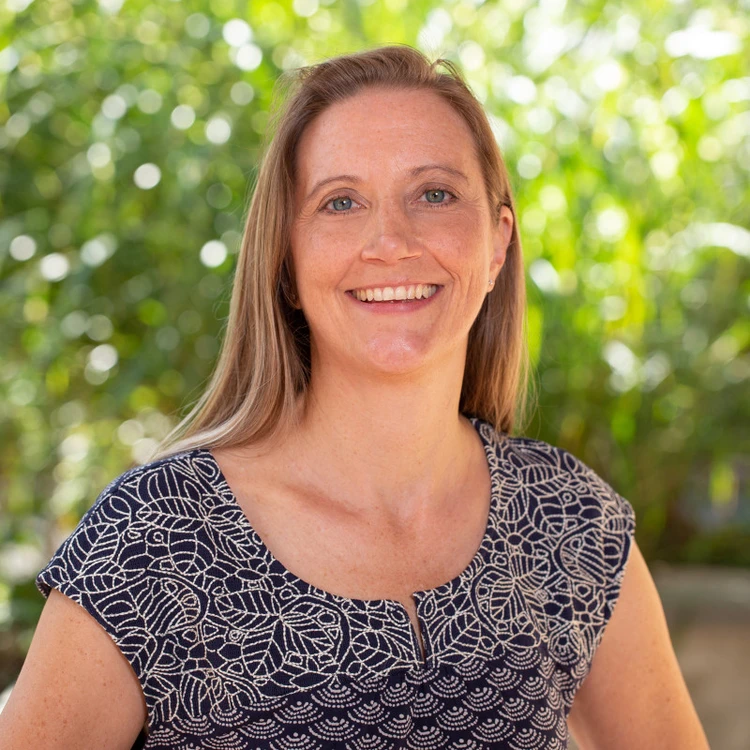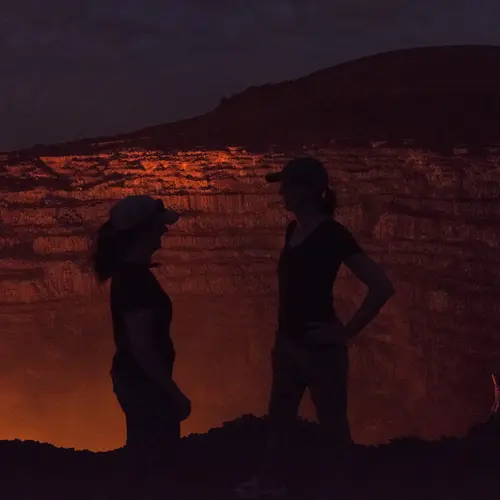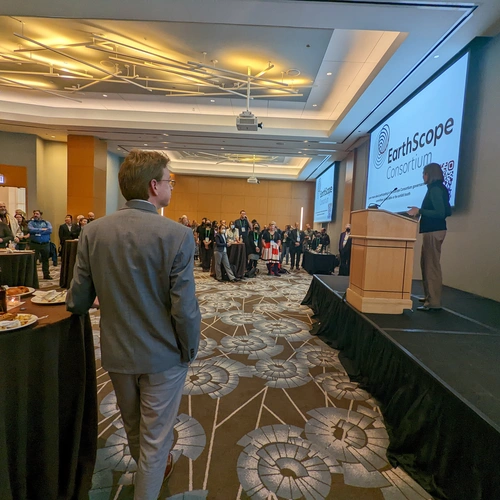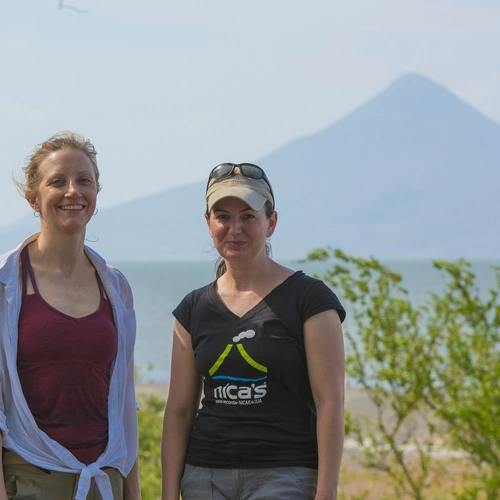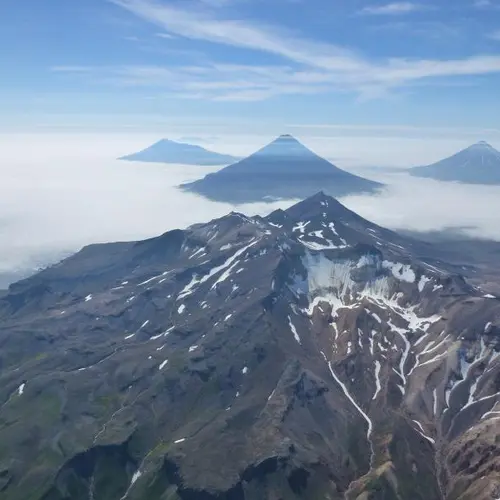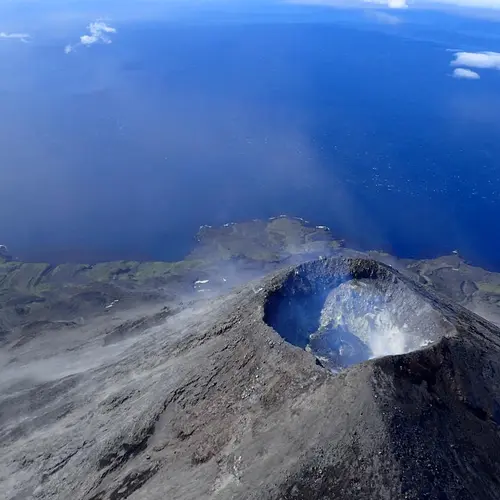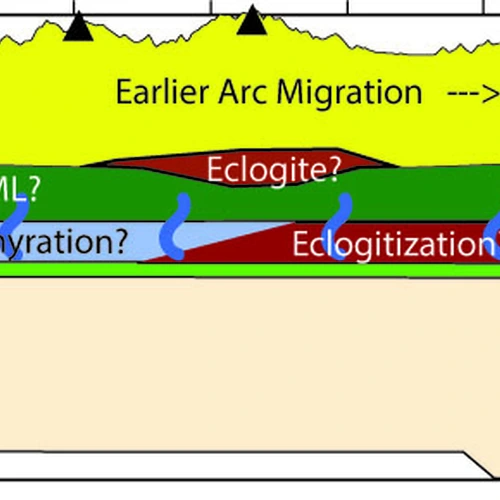Overview
Seismic waves flow through Earth’s solid and liquid material differently, allowing Earth scientists to determine various aspects of the composition of the Earth’s interior. Broadband seismology looks at a broad spectrum of waves for high-resolution imaging. Lara Wagner collects this data from continental areas of the planet that have not been studied before to better understand the elastic properties of Earth’s crust and upper mantle, the rigid region called the lithosphere.
In addition to her observational work, Wagner is involved in developing new seismometer technologies and strategies to improve the quality of data. She is the newest Carnegie Earth scientist joining the staff the fall of 2014. However, she is not new to Carnegie. She was a postdoctoral fellow from 2005 to 2007.
Before joining Carnegie as a staff member, Wagner was an associate professor in the Department of Geological Sciences at the University of North Carolina at Chapel Hill. She received her B.A. in history and sociology at Columbia University and her Ph. D. at the University of Arizona. She received the American Geophysical Union’s Outstanding Student Paper Award in 2004; she won the Walter H. Wheeler Faculty Teaching Award in 2012; and was the Incorporated Research Institutions of Seismology/Seismology Society of America Distinguished Lecturer in 2013.
Research
The NSF-funded MUSICA project is driven by an international team of Earth scientists including Lara Wagner who seek to combine their respective research strengths in seismology, geochemistry/geochronology, basin analysis, structure, tectonics, thermochronology, and geodynamics to study the unique tectonic setting present today in Colombia in order to gain a better understanding not only of the evolution of the Colombian continent—but continental evolution in general.
This project will expand our understanding of how a specific tectonic setting, flat-slab subduction, affects the continents on which we live. In Colombia, we have found a unique setting where a once extensive flat slab has split into two parts, one of which remains flat, and one that has comparatively recently foundered and returned to a normal subduction geometry. With this natural experiment in place, Wagner can study the processes responsible for the mountain building, ore deposits, and volcanic hazards in Colombia to gain a better understanding about how continents evolve over time and how these types of volcanic events are related to this specific tectonic environment.
The project also includes an outreach and portion to middle and high school teachers so that they can build geoscience curriculums that better represent modern geosciences.
Learn moreThe goal of the PULSE project was to investigate the causes and consequences of Peruvian flat-slab subduction using broadband seismic data analyses. Flat slab subduction refers to the near-horizontal subduction of an oceanic plate at some depth below the overriding lithosphere. Various causes have been suggested for flat slab subduction including increased overriding plate velocity, increased mantle viscosity, young age of the subducting lithosphere (e.g. Van Hunen and N.J. Vlaar, 2001), and subduction of oceanic plateaux/ridges (e.g. Gutscher et al., 2001).
A number of tectonic features have been attributed to flat-slab subduction, including the migration of arc-volcanism away from the trench, thickening of the overriding lithosphere, basement cored uplift, and ignimbrite flare-ups. Today, approximately 10% of modern convergent margins can be characterized as having flat (or very shallowly dipping) subduction (e.g. Gutscher and Engdahl, 2000).
This project involved the deployment of 40 broadband seismometers along three transects that covered the area from Lima to Cusco. Click here for a link to the PULSE FDSN site to see more details about the station locations, published papers, and accessing the data she collected.
PULSE was temporally and spatially colocated with the CAUGHT deployment that comprised an additional 50 broadband stations just to the south of the PULSE stations (see below).
After many cumbersome field deployments, Lara Wagner and Diana Roman developed Carnegie Quick Deploy Box (QDB), which takes advantage of new technology improvements to make compact and cost-effective broadband seismometers, facilitating deployment during rapid response and large array situations. The box is small enough (~13"x13"x21") and lightweight enough (< 35 lbs) to be checked as airline luggage.
The goal of the QDB is to have everything needed for an intermediate period station install (except the battery and shovel) contained in a single box for shipment, and to be able to leave everything (except the shovel) in that box when the station is deployed. Other traditional broadband field installations are typically time-consuming and require bulky construction materials, limiting the number of stations that can be installed from a single-vehicle without repeated trips to a storage facility.
The sensor and the solar panels are connected to the recorder and battery inside the waterproof Pelican case via waterproof pre-installed bulkhead plug fittings. Everything fits in the box for shipping except the battery, and everything in the box stays in the field for easy demobilization at the end of the project.
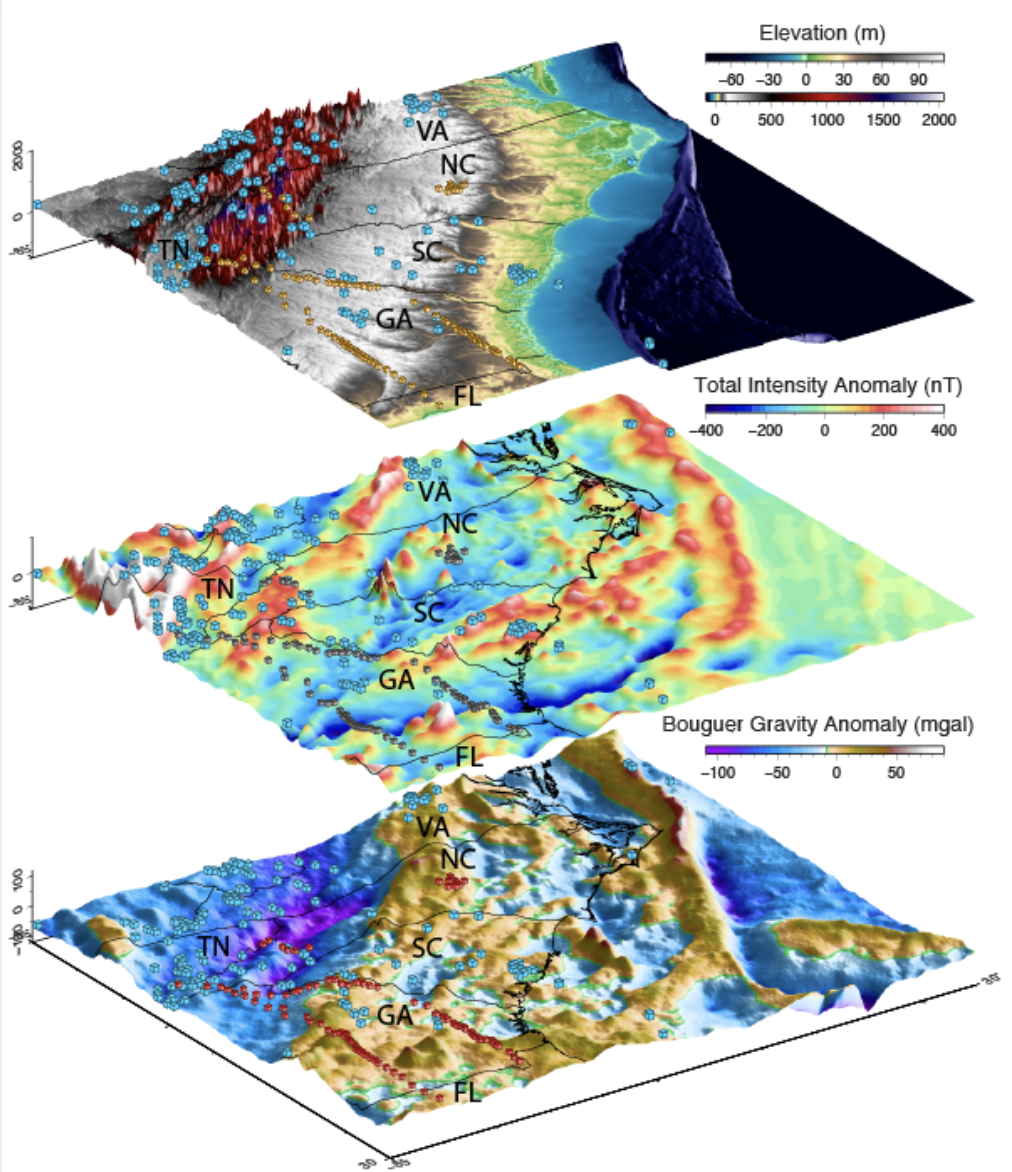
The broad goal of the SESAME proposal was to improve our understanding of lithospheric accretion processes and models of passive margin development. The Paleozoic Appalachian orogen in the southeastern United States - specifically the suture between Laurentia (proto-North America) and Gondwana (proto-Africa/South America) in southern Georgia provides an ideal location for imaging crust and mantle structures related to accretion.
SESAME comprised 85 broadband seismic stations deployed in three transects across Georgia and adjacent states. Click here for a link to the SESAME FDSN site to see more details about the station locations, published papers, and accessing the data she collected.
In addition to studying the suture, the SESAME array was deployed as the EarthScope Transportable Array swept across the southeastern United States. The combined resolution of these two data sets has provided unparalleled images of crust and upper mantle structures across our study area. Many of the structures observed were entirely unexpected
CAUGHT was a multidisciplinary effort to test end-member geodynamic models for the surface uplift, deformation history, and lithospheric evolution of the central Andes of southern Bolivia and Peru. The central Andean plateau is one of the most imposing topographic features on Earth's surface and influences climate on regional and global scales.
Despite its significance, the geodynamic processes responsible for plateau formation and evolution remain poorly understood. Approaches her team used included:
- imaging lithospheric structure from deployment of a broadband seismometer array and passive source seismology
- quantifying temporal variations in mantle input and crustal thickness into the Altiplano using igneous petrology and geochemistry
- quantifying kinematic and shortening history from balanced cross-sections, sedimentary basin analysis, and detrital and bedrock thermochronology
- improving reconstructions of the plateau elevation and climate history from stable isotope geochemistry
- climate modeling for evaluation of alternative explanations of paleoclimate and paleoaltimetry observations.
Wagner's part of this research project was the broadband seismic deployment and analyses. Together with Susan Beck and George Zandt of the University of Arizona, she installed 50 broadband seismic stations across the northern Altiplano adjacent to the PULSE project described above. Click here for a link to the CAUGHT FDSN site to see details about the station locations, published papers, and accessing the data she collected.
CV
- Ph.D. in Geosciences (2005) University of Arizona, Tucson, AZ
- B.A. in History/Sociology (1996) Columbia College of Columbia University, New York, NY
- Harry Oscar Wood Chair of Seismology (2021 - present)
- IRIS/SSA Distinguished Lecturer (2013)
- Editors’ Citation for Excellence in Refereeing - Geochemistry, Geophysics, Geosystems (2013)
- Walter H. Wheeler Faculty Teaching Award (2012)
- AGU Outstanding Student Paper Award, Seismology Section (2004, 2003)
- AGU Outstanding Student Paper Award, Tectonophysics Section (2004)
- National Science Foundation Graduate Student Research Fellow (2002-2005)
- NSF - Frontier Research in Earth Sciences, $1,054,052 (Carnegie - lead PI), $2.7M (total), Collaborative Research: Consequences of flat slab subduction on the chemical, structural, and dynamic evolution of continental lithosphere, September 1, 2019 - August 31, 2023.
- The Brinson Foundation $55,000 each year for 4 years (co-PI with Diana Roman) Development of a next-generation quick-deploy seismic monitoring system, 2014 – 2018.
- University of North Carolina, $45,000, Central North Carolina Seismic Monitoring. One time funding to install broadband seismic stations in Sanford, and to adopt an EarthScope Transportable Array Station near UNC-Chapel Hill.
- NSF - Geophysics, $315,695 (UNC-lead PI), $756,000 (total) Collaborative Research: Study of the Peruvian flat slab and its effects on the continental lithosphere, August 1, 2010 - July 31, 2014.
- NSF - EarthScope, $302,505 (UNC - PI), $1,174,572 (total) Collaborative Research: Understanding lithospheric suturing and passive margin development beneath the southeastern U.S., January 1, 2010 - June 30, 2014.
- NSF - Continental Dynamics, $225,539 (UNC - PI), $2,545,967 (total) CAUGHT: Central Andean Uplift and the Geodynamics of High Topography, June 1, 2009 - May 31, 2013.
- NSF - Geophysics, $119,620 (UNC - sole PI) Joint inversion of surface waves and teleseismic body waves to study the formation of the High Lava Plains in Eastern Oregon, July 15, 2008 - June 30, 2011.
- H.O. Wood Chair of Seismology (2021 - present)
- Staff Scientist (2014 – Present) Carnegie Institution for Science, Washington, DC
- Associate Professor (2014) University of North Carolina at Chapel Hill, Chapel Hill, NC
- Assistant Professor (2008 – 2014) University of North Carolina at Chapel Hill, Chapel Hill, NC
- Postdoctoral Fellow (2005 – 2007) Carnegie Institution of Washington, Washington, DC
- Graduate Research Assistant (2000-2005) University of Arizona, Tuscon, AZ
- Research Intern (2002) Lawrence Livermore National Laboratory, Livermore, CA
- Research Intern (2001) BP, Houston, TX
- EarthScope Consortium Board of Directors - Chair (January 1, 2023 – January 1, 2025)
- Incorporated Research Institutions for Seismology (IRIS) Board of Directors - Member (January 1, 2020 – present)
- IRIS-PASSCAL Standing Committee - Chair (2015 – 2017)
- EarthScope Synthesis Workshop co-Organizer (2017, 2016)
- IRIS Wavefields Demonstration Community Experiment (2016)
- IRIS-NGEO Proposal Community Co-Author (2016) Enabling Discoveries in Multiscale Earth System Dynamics
- IRIS-PASSCAL Standing Committee - Member (2008 – 2010; 2014 – 2015)
- Future Geophysical Facilities Required to Address Grand Challenges in the Earth Sciences, Report Writing Committee & Workshop Participant
- American Geophysical Union Fall Meeting Planning Committee (2015) Seismology Section
- East Coast of North America (ENAM) Co-Chief Scientist (2014 - 2015) Broadband Ocean Bottom Seismometer Deployment & Demobilization
- AGU Fall Meeting Special Session Convener (2014, 2012)
- IRIS/SSA Distinguished Lecturer (2013)
- NSF-EarthScope National Meeting Tri-Chair (2013)
- GSA Annual Meeting Special Session Convener (2012)
- NASA Review Panel Member
- SSA Richter Awards Committee Member
- NSF Review Panel Member
- Deutsche Forschungsgemeinschaft (DFG) Review Panel Member
Recent Talks
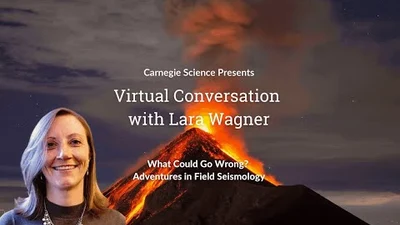
A Virtual Conversation with Seismologist Lara Wagner
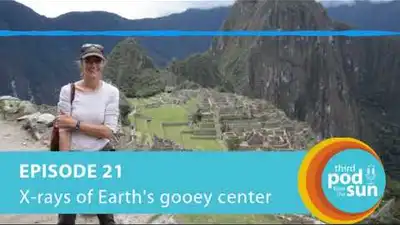
Podcast: X-rays of Earth’s gooey center
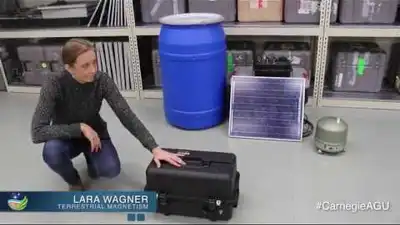
Lara Wagner AGU 2017
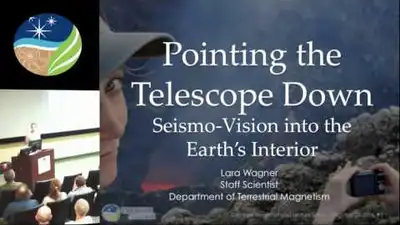
Lara Wagner: "Pointing the Telescope Down: Seismo-vision into the Earth"
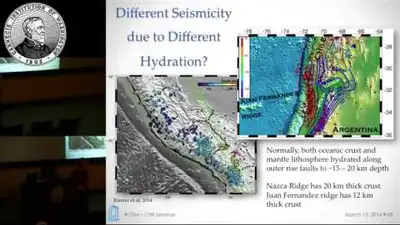
Lara Wagner "Can Flat Slabs Really Do That? New Evidence from South America"
